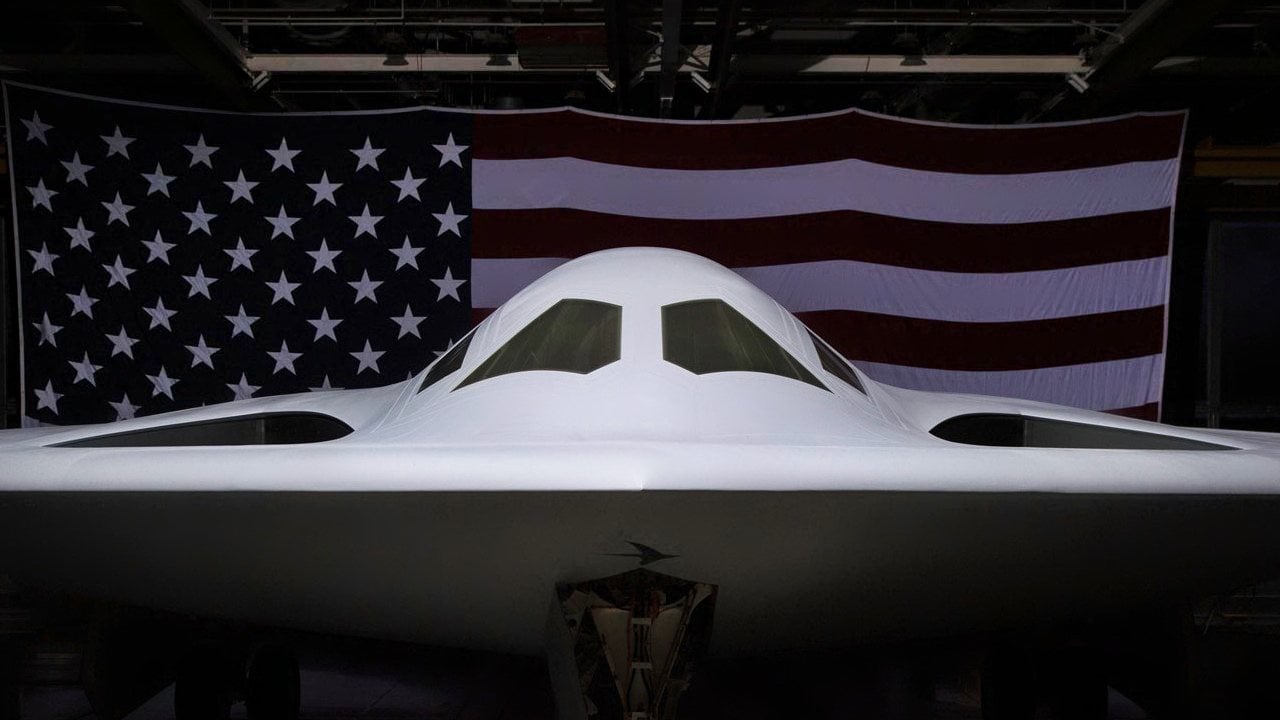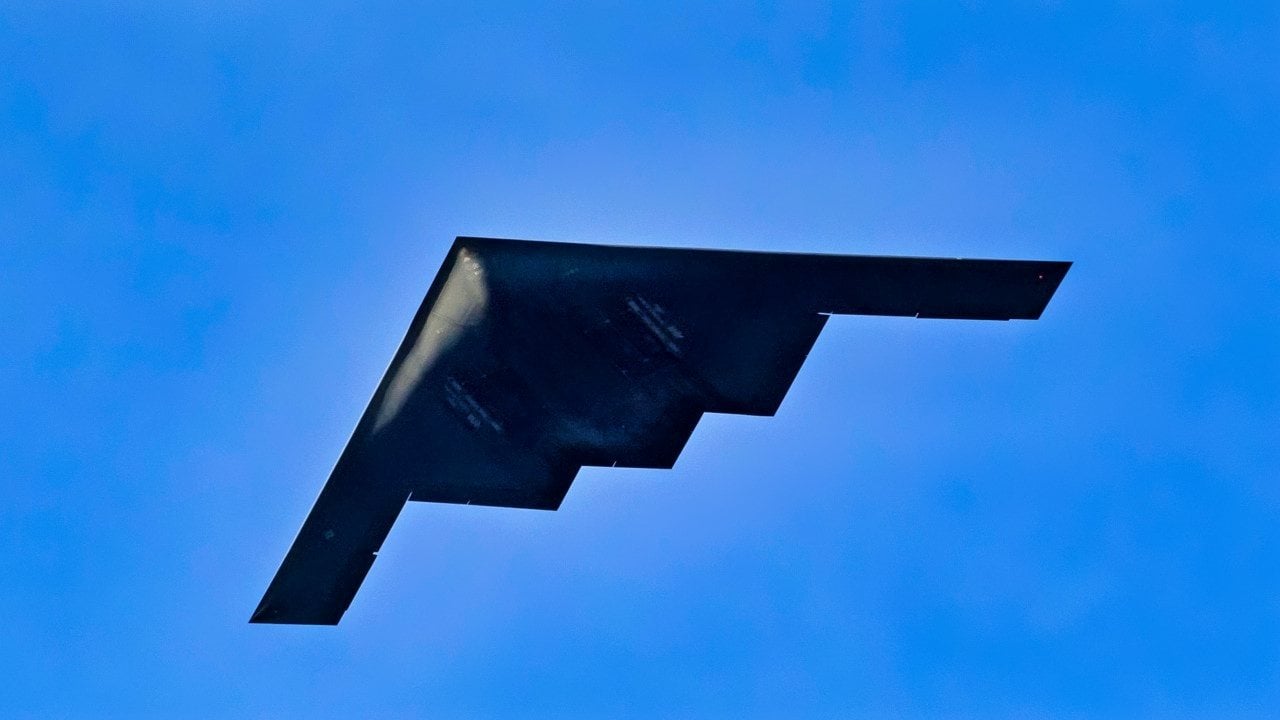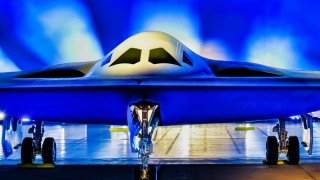China Is Developing Its Very Own B-21 Raider Stealth Bomber
The upcoming B-21 Raider stealth bomber will soon become the backbone of the U.S. Air Force's nuclear deterrence strategy, replacing older aircraft like the B-1 Lancer and B-2 Spirit. After completing a critical structural test, the B-21 Raider will be delivered to Ellsworth Air Force Base and offer unparalleled global strike capability.
B-21 Raider Latest News - What You Need to Know: The upcoming B-21 Raider stealth bomber will soon become the backbone of the U.S. Air Force's nuclear deterrence strategy, replacing older aircraft like the B-1 Lancer and B-2 Spirit. After completing a critical structural test, the Raider is set to be delivered to Ellsworth Air Force Base and will offer unparalleled global strike capability.

-Smaller and more advanced than its predecessors, the B-21 will enhance U.S. deep-strike capabilities with its modular design and stealth features.
-However, China is developing its own H-20 stealth bomber to challenge the Raider, signaling heightened competition in next-generation nuclear bombers globally.
B-21 Raider: The Next-Generation Bomber Set to Redefine U.S. Air Power
When the U.S. Air Force’s upcoming stealth bomber enters service, it will become the new backbone of the service’s air-launched nuclear deterrent strategy. The B-21 Raider will incrementally replace the older B-1 Lancer and B-2 Spirit airframes down the line, providing the service with unparalleled global strike capability. Progress on the Raider appears to be moving along quite nicely, as the Air Force recently disclosed updates on the bomber’s development.
During last month’s panel at the Air and Space Force Association’s Air, Space and Cyber Conference, service leaders explained that the Raider has completely completed its static test on the G-1 asset- an essential milestone that “confirmed the structural design of the aircraft.”
The B-21 is preparing to be delivered to Ellsworth Air Force Base in South Dakota, where the platform will be primarily based. Considering rising geopolitical tensions across the globe, the imminent arrival of the new bomber is vital to U.S. interests.
“We are the free world’s only bomber force. We’re probably not going to see a decreased demand signal from our regional combatant commands on bomber task forces,” Gen. Thomas Bussiere, Air Force Global Strike Command commander, stated at the panel last month: “That demand signal, in my opinion, is only going to go up in the years ahead. As we transition from legacy to new, the B-21 fleet will provide great comfort to our allies and should provide great pause to any potential adversary.”
What will the B-21 Raider bring to the table?
While the service’s existing B-2 Spirit, B-52 Stratofortress and B-1 Lancer platforms remain lethal and formidable platforms, the B-21 is expected to truly be next-level in terms of capability. The bomber appears to be at least 15% smaller than its predecessors according to released images, an advantage since this will make the Raider more challenging for enemy aircraft to detect.

The airframe’s stealth capabilities will allow it to perform deep strike missions against previously impenetrable targets.
Since the Raider will incorporate modular systems that will enable upgrades as new technologies emerge, it could work in conjunction with similarly networked platforms like the F-35 Joint Strike Fighter.
The PRC is working on its own B-21 Raider counterpart
When the Raider officially enters service with the Air Force sometime in the next decade, it will undoubtedly lead the development of sixth-generation aircraft across the globe. However, China and Russia are also working to fulfill their own respective next-generation programs.
The PRC’s upcoming H-20 stealth bomber appears to be a copycat version of the U.S. Air Force’s B-2 bomber and will directly threaten its American counterparts when (and if) introduced.
Since Beijing already possesses land-based and sea-based military platforms capable of delivering nuclear weapons, the introduction of the H-20 would elevate the PRC’s nuclear capabilities.
In the past, Chinese researchers have claimed that their new hypersonic missiles can intercept B-21 Raiders in simulated wargames. The Raider may not match the Mach-6.0 speed of these weapons, but the bomber's stealth design is meant to prevent missile locks. Hopefully, this scenario will never play out in a real war.
About the Author: Maya Carlin, Defense Expert
Maya Carlin, National Security Writer with The National Interest, is an analyst with the Center for Security Policy and a former Anna Sobol Levy Fellow at IDC Herzliya in Israel. She has by-lines in many publications, including The National Interest, Jerusalem Post, and Times of Israel. You can follow her on Twitter: @MayaCarlin.
Image Credit: Creative Commons and/or Shutterstock.


